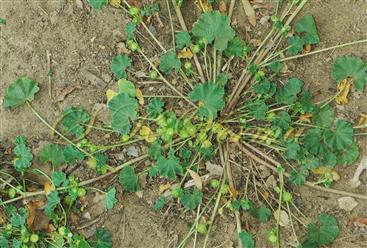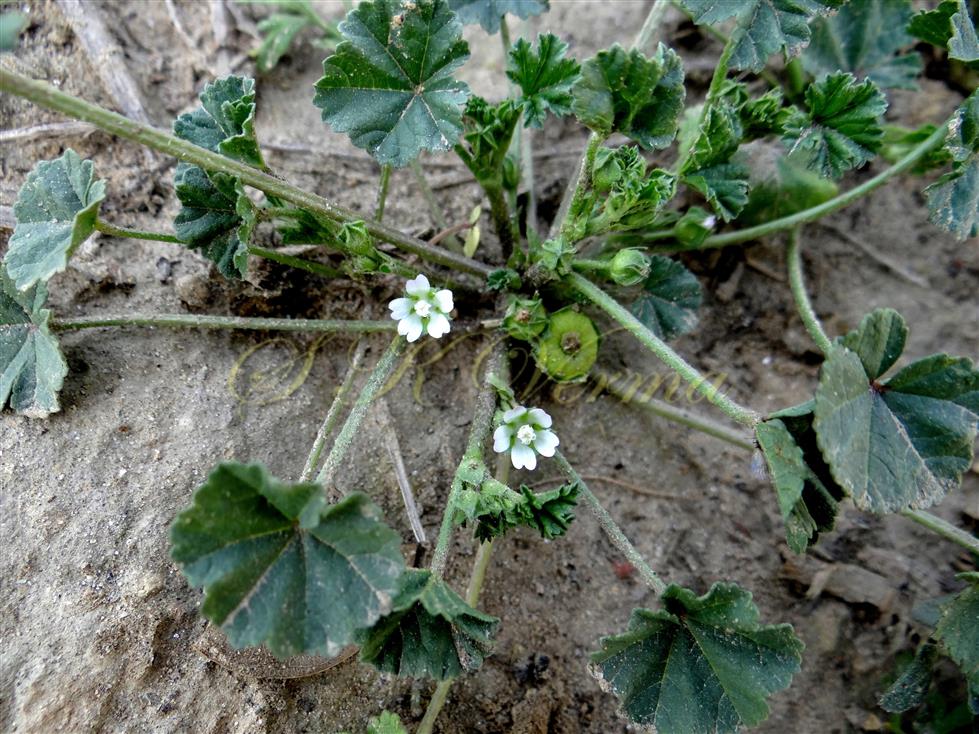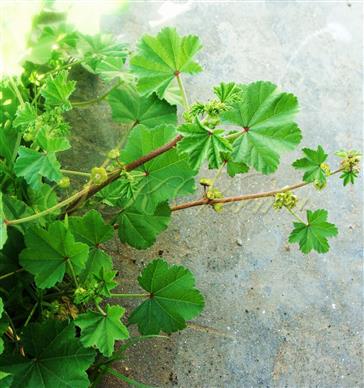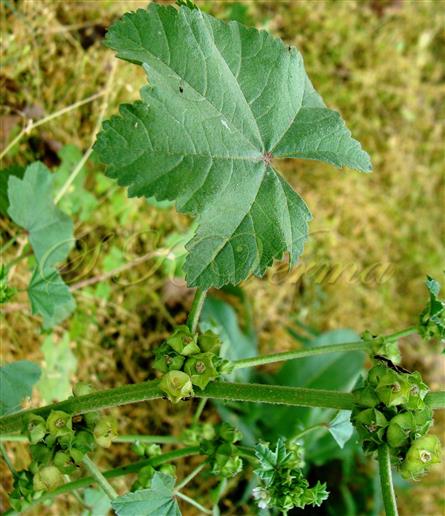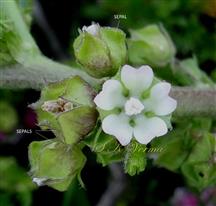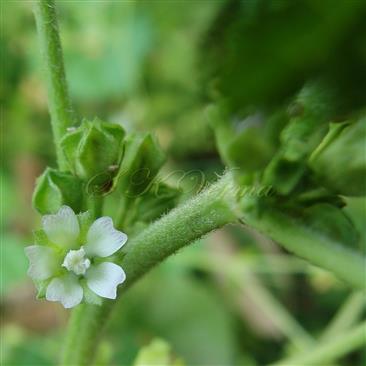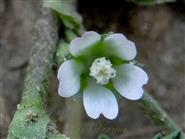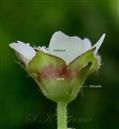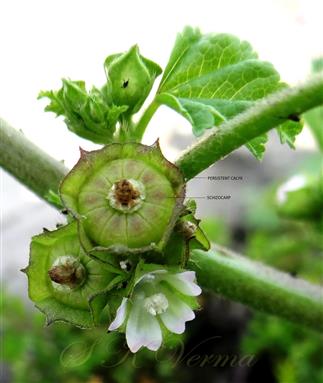MALVA
Malva
Tourn. ex L., Sp. Pl. 687. 1753; Gen. Pl. 5: 308. 1754; 1867; Boiss., Fl. Or. 1: 818. 1867; Hook. f., Fl. Brit. Ind. 1: 320. 1875; Hutch., Gen. Fl. Pl. 2: 552. 1967; Fl. China @ eFloras.org 12: 265; Hill, Fl. North Amer. @ eFloras.org vol. 6; Fl. Pak. @ eFloras.org p. 34.
Herbs or undershrubs, annual or perennial, ascending or erect. Leaves alternate, petiolate; stipulate, stipules ciliate, persistent; leaf blade orbicular, reniform, unlobed, palmately lobed or sometimes deeply dissected. Flowers axillary, solitary or fascicled, rarely in terminal racemes, actinomorphic, bisexual, 5-merous, hypogynous. Epicalyx segments 3, linear, ovate or foliaceous, usually free. Calyx cup-shaped, 5-lobed, often accrescent and spreading in fruit. Petals 5, usually purple, sometimes white, rose to dark red, obovate or oblong-obovate, apex usually emarginate (or with a prominent notch). Staminal column included, anthers borne on apex of staminal column. Carpels 8-15, ovary as many loculed as the number of carpels, 1 ovule per loculus; styles as many as carpels, adaxial surface stigmatic. Fruit small, discoid-oblate (spheroid flattened at poles), 8-15 mericarps, pubescent or glabrous, reticulately veined or smooth, 1-seeded, indehiscent. Seeds reniform- rounded, notched, glabrous.
53 species
Malva parviflora
Malva parviflora
L., Sp. Pl. 226. 1753; Boiss, Fl. Or. 1: 839; 1867; Masters in Hook. f., Fl. Brit. India 1: 321. 1875; Sharma & Kachroo, Fl. Jammu (Illustr.) 2: t. 35. 1983; Dhaliwal & Sharma, Fl. Kullu Dist.168. 1999; Kaur & Sharma, Fl. Sirmaur 170. 2004; Hill, Fl. North Amer. @ eFloras.org vol. 6; Fl. Pak. @ eFloras.org p. 42. Althaea microcarpa Alef., Oesterr. Bot. Z. 12: 261. 1862; A. parviflora (L.) Alef., Oesterr. Bot. Z. 12: 261. 1862.
Annual, prostrate-procumbent or decumbent herb. Stem up to 60 cm long, wide branched, stellate pubescent. Leaves orbicular, cordate at base, 2-4 cm x 2-6 cm, stellate pubescent or hairs may be simple, often 3-7-lobed, crenate-serrate; petiole 3-17 cm long, simple and stellate hairy. Stipules 2-5 mm x 1-2 mm, lanceolate to ovate, margin ciliate. Flowers 3-4 mm long, axillary, usually fascicled, compact, rarely solitary, actinomorphic, bisexual, 5-merous, hypogynous; pedicels 3-5 mm long, usually not visible, stellate pubescent, in fruit up to 10 mm long, glabrescent. Epicalyx segments 3, free, +/- 3 mm x 1 mm, linear-lanceolate, stellate pubescent. Calyx cup-shaped, 3-4.5 mm long, 5-lobed, stellate pubescent or glabrous, lobes orbiculate-deltate, apex often abruptly acuminate, short ciliate, persistent; calyx in fruit ca. 7-10 mm long, lobes wide spreading and scarious. Petals 5, free, white, pinkish at tips, 3-4.4(-5) mm long, subequal to or slightly longer than calyx, glabrous, oblong, narrow at base and notched at apex. Staminal tube glabrous, ca. 2 mm long. Carpels (8)10, ovary as many locular as the number of carpels, each loculus 1-ovuled, 8-10 styles, free. Fruit small, 5-6 mm across, discoid, mericarps 8-10, dorsally face with raised reticulate venation, radially transversely ribbed, 1.5-2 mm across, margin winged; each mericarp 1-seeded. Seeds ca. 2 mm long and broad, kidney-shaped, brown, black, glabrous.
Common Names: Cheeseweed mallow, Marshmallow, Mallow, Least Mallow, Little Mallow, Small-flowered Mallow, Small-flowered Marshmallow, Egyptian Mallow; Panirak (Hindi); Nanna, Geogisag, Sonchal (Punjabi)
